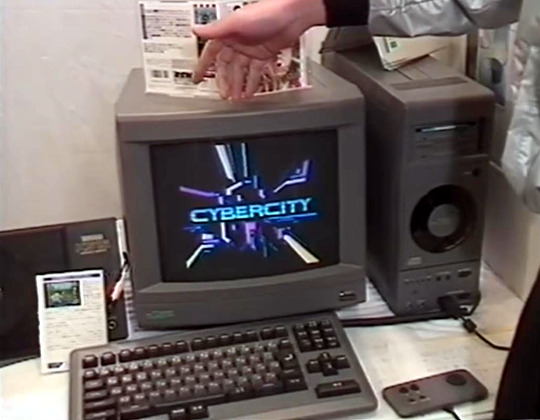Interests in Computing, Japan, Anime, Sci-Fi, Human Evolution, Enjoy life, Girls, Foods, Science, Modern, Vintage, Flowers, and more...
Don't wanna be here? Send us removal request.
Text
The Best Way to Enjoy Retro Games Today
This is a pretty subjective topic, so just to be clear: everything I’m about to share here is simply my opinion.
There are so many older games that are still worth playing today. They’re true works of art. In many ways — story, gameplay, technical innovation — these games are amazing.
They pushed the limits of what was possible at the time and paved the way for what we enjoy today.
In a perfect world, these games would get new versions that stay faithful to the original gameplay while taking full advantage of today’s technology.
That way, new generations could experience them properly.
Unfortunately, that’s not usually what happens. Aside from a few rare exceptions, to enjoy these classics, we have to turn to emulation or modern re-releases — and most of those tend to be lazy ports to new platforms.
There’s also the issue of what’s commonly called Pixel Art, which, in my opinion, is another part of the problem.
Pixel Art should be about doing the best you can with pixels, using today’s technology — not about artificially limiting a game’s resolution.
Especially now, when Ultra HD is the norm, it makes no sense to hold games back.
Imagine how incredible it would be to play Chrono Trigger, with all the characters and settings true to Akira Toriyama’s original art, polished gameplay, and all the benefits of modern resolution.

So all I can do is hope this misguided Pixel Art movement fades away, and that we can finally enjoy everything modern technology has to offer — without losing the heart of these classic games.
A Strategy for Dealing with the Current Reality
Since the ideal doesn’t exist (yet), what I do is use emulation with shaders — algorithms that process the game's image in real time to improve how it looks.
RetroArch is, without a doubt, the best emulation project available today.
That said, it’s extremely complex.
The number of settings and options is almost endless, and navigating it can be overwhelming.
After months of experimenting, I ended up realizing that most classic games basically fall into three visual categories:
1. Simple
These are games with basic, rudimentary graphics, from a time when the technical possibilities weren’t fully understood yet.
They’re usually older games that leaned heavily into simplicity.
Best approach:
For these, the ideal is to use a shader that turns the raw pixels into smooth lines.
One great example is edge-smoothing/scalefx/scalefx-9x.slangp.
The results are simply incredible — it keeps the original look while making the image much more pleasant to the eyes.
2. Trickster
These are games that squeezed every bit of available technology to create stunning visuals.
They often took advantage of the quirks and limitations of old TVs — like screen interference and interlacing effects — to create visual effects that wouldn't be possible with just raw pixel art.
A classic example is the waterfall reflection in Sonic’s second level.
Challenge:
These games are a real challenge for modern shaders.
Simply smoothing the pixels would ruin the fine details and the artists’ original intentions.
Best approach:
The best way to handle this is to emulate the old display technology itself.
Among the many shaders that simulate old CRT TVs, the best one I’ve found is edge-smoothing/presets/crt-hyllian-sinc-smartblur-sgenpt.slangp.
It does an outstanding job of recreating the glow, interlacing, and special charm of CRT monitors.
3. Detailed
These are games with super detailed pixel work, like mosaics that, when displayed properly, create truly rich and vibrant images.
Chrono Trigger is a perfect example — the vegetation, the characters, the way the wind moves through the scenery — it’s all packed with incredible detail.
In these games, the pixels are honest: they don’t rely on TV quirks to create effects.
Best approach:
For this kind of game, the goal is to boost the resolution while slightly softening the image, letting the pixels blend naturally and harmoniously.
The shader that does this best is edge-smoothing/xsoft/4xsoft.slangp.
It upscales the image nicely, reduces excessive sharpness, and preserves the original artistic depth, while lightly mimicking the softer look of old TV screens.
Conclusion
My goal with this post was to share my experience and hopefully help anyone just starting out with emulation.
Of course, taste is subjective — but I’m confident that following this strategy will give you a very satisfying result.
I'm definitely open to suggestions and would love to expand this article with new ideas and strategies in the future.
Good luck!
0 notes














